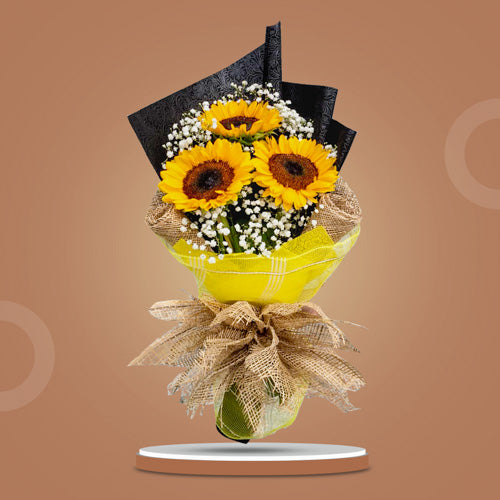A Brief History of Lilies
Lilies, belonging to the botanical family Liliaceae, encompass a diverse collection of approximately 80 to 100 species. Predominantly found in the Northern Hemisphere, particularly in Asia, Europe, and North America, lilies have captivated admirers with their stunning floral displays. Characterized by their sizable blossoms borne on leafy stems, some lily varieties emit a delightful fragrance. These exquisite flowers have earned a prominent place in both aesthetic appreciation and cultural symbolism.
Renowned for their striking beauty and enchanting scent, lilies have been cherished throughout various historical periods. They serve as a remarkable testament to nature's artistic prowess. As cut flowers, lilies offer an extensive spectrum of captivating hues, encompassing white, pink, red, orange, and yellow shades. Notably, these vibrant blooms exhibit exceptional longevity, ensuring an enduring visual delight.
Lily: The Pure Flower
Ancient Times
In ancient times, the lily held great significance and was associated with various mythological tales and deities. One such legend involves the goddess Hera, who was the wife of Zeus. It is believed that the lily was dedicated to her. According to the story, Zeus fathered Hercules with a mortal woman named Alcmene. Wanting his son to be more connected to the divine realm, Zeus arranged for Hercules to be brought to Hera. To ensure a peaceful encounter, he used medication to induce Hera into a deep sleep. While she slept, Hercules was placed at her breast to nurse. However, when Hera suddenly awoke, startled and surprised, she flung the infant away, causing her milk to spill into the sky. This event is said to have formed the Milky Way, while a few drops of the spilled milk gave rise to the first lilies.
In Roman mythology, the goddess Venus had her own association with the lily. According to legend, as Venus emerged from the sea foam, she caught sight of a beautiful flower. Envious of its pure white color and exquisite beauty, Venus felt threatened by its presence. In her jealousy, she caused a large, monstrous pistil to grow from the snow-white heart of the lily, perceiving it as a rival to her own beauty. This mythological tale explains the connection between the lily and Venus, highlighting the flower's allure and its association with love and beauty.
Additionally, the lily is also linked to the Satyrs, mythological creatures known for their passionate ardor. Their presence further reinforces the captivating and seductive nature attributed to the lily.
Early Discoveries
Archaeological discoveries in Amnisos, Crete have unveiled early depictions of the lily, dating back to approximately 1580 B.C. during the Minoan Period. These findings indicate that lilies held sacred significance for the Minoan civilization. Notably, the Minoans revered a Great Goddess known as Britomartis, who was closely associated with the lily. Britomartis, whose origins can be traced back to the Neolithic period, held a prominent role in the religious beliefs of the Minoans in Crete. However, with the onset of a mysterious calamity in the mid-sixteenth century B.C., the Minoan civilization faced significant upheaval. As a result, Britomartis's cult assimilated into Greek religion, and she came to be recognized as a precursor to the Greek goddess Artemis.
The lily also held significance in ancient Jewish civilization, as evidenced by its mention in multiple instances in the Bible. Moreover, the flower is associated with Aelia Eudoxia, the influential and strong-willed wife of the Roman Emperor Arcadius. Aelia Eudoxia's bust, adorned with a diadem, is depicted with the "Hand of God" holding a wreath over her head in artwork from the years 401 to 403 AD.
In the Bible
The lily holds significant symbolism in both the Old and New Testaments of the Bible. Within Christianity, the lily has come to represent purity and chastity, and it is closely associated with the Virgin Mary. Additionally, the lily symbolizes death, serving as a reminder of the loss of innocent children and the martyrdom of saints. The lily has become an integral part of Easter traditions, signifying new life and resurrection.
The scarlet anemone, also known as the Madonna lily, is often considered the biblical lily, as referenced in the Song of Solomon 2:1. The mention of "lilies of the field" in Matthew 6:28 is more general and can encompass various wildflowers, including the iris. Another notable lily variety is the Convallaria cultivar, commonly known as the lily of the valley, characterized by two long oval leaves and white bell-shaped flower spikes. These floral representations also extend to the depiction of the Virgin Mary's Tears.
White lily bouquets are particularly popular in Christian homes, serving as a symbol of Christ's resurrection and commemorating the Easter season.
Lily Explorers
The Victorian era witnessed a surge of European plant explorers, particularly British individuals, who embarked on expeditions around the world in search of "new" plant species. These explorers played a significant role in the discovery of numerous lily species. One notable figure among them was Augustine Henry, an Irish doctor who later became a botanist and explorer. Initially driven by a quest for therapeutic plants in the Orient, Henry became enthralled by the pursuit of unique and uncommon flowers. One of his notable discoveries was Henry's lily, scientifically known as Lilium henryi, which belongs to the orange-flowered Lilium genus.
Another renowned plant explorer of the Victorian era was E.H. Wilson, an Englishman who became widely recognized as "Chinese Wilson" due to his remarkable findings in China. Wilson's expeditions resulted in the discovery of numerous plant species, including the striking white Lilium regale, commonly referred to as the regal lily. This particular discovery stands as a testament to Wilson's contributions to botanical exploration.
Easter Lily
Originating from Japan, Lilium longiflorum, commonly known as the Easter lily, holds a notable history. Following World War I, an Oregon soldier named Louis Houghton brought back some bulbs of this lily variety with him upon returning home. He generously shared these bulbs with fellow gardeners across the United States. However, the availability of Easter lilies became scarce and their prices rose significantly during World War II due to the disruption of bulb supplies from Asian sources. In response to this shortage, the production of lily nurseries in the United States experienced a substantial surge. By the year 1945, the West Coast alone boasted around 1,200 lily farmers, reflecting the remarkable growth of the industry.
Hybridization History
Prior to extensive hybridization efforts, lilies were considered rare and challenging to cultivate. However, the development of reliable lily hybrids has significantly transformed the market. One notable figure in this field is Jan de Graaff, a native of Holland, who established Oregon Bulb Farms in 1934.
In 1938, De Graaff began his experiments with lilies, and by 1941, he successfully created a significant hybrid called Enchantment. This particular lily boasted a striking coral color and upward-facing blooms, earning it the title of "the most famous hybrid lily of all time" by Horticulture magazine.
Medicinal Value and Historical Uses of Lilies
Although lilies do not possess medicinal properties, they were once believed to possess magical qualities. In Elizabethan medical books, lilies were mentioned as remedies for various ailments, including fever, wounds, and arthritis. However, these claims were based on traditional beliefs rather than scientific evidence.
On the culinary front, Lily bulbs have been utilized in Chinese cuisine for centuries. With their starchy nature, they have become a common ingredient in Shanghai's native cuisine. Chinese cooks have incorporated lily bulbs into a variety of dishes, showcasing their unique flavor and texture.



